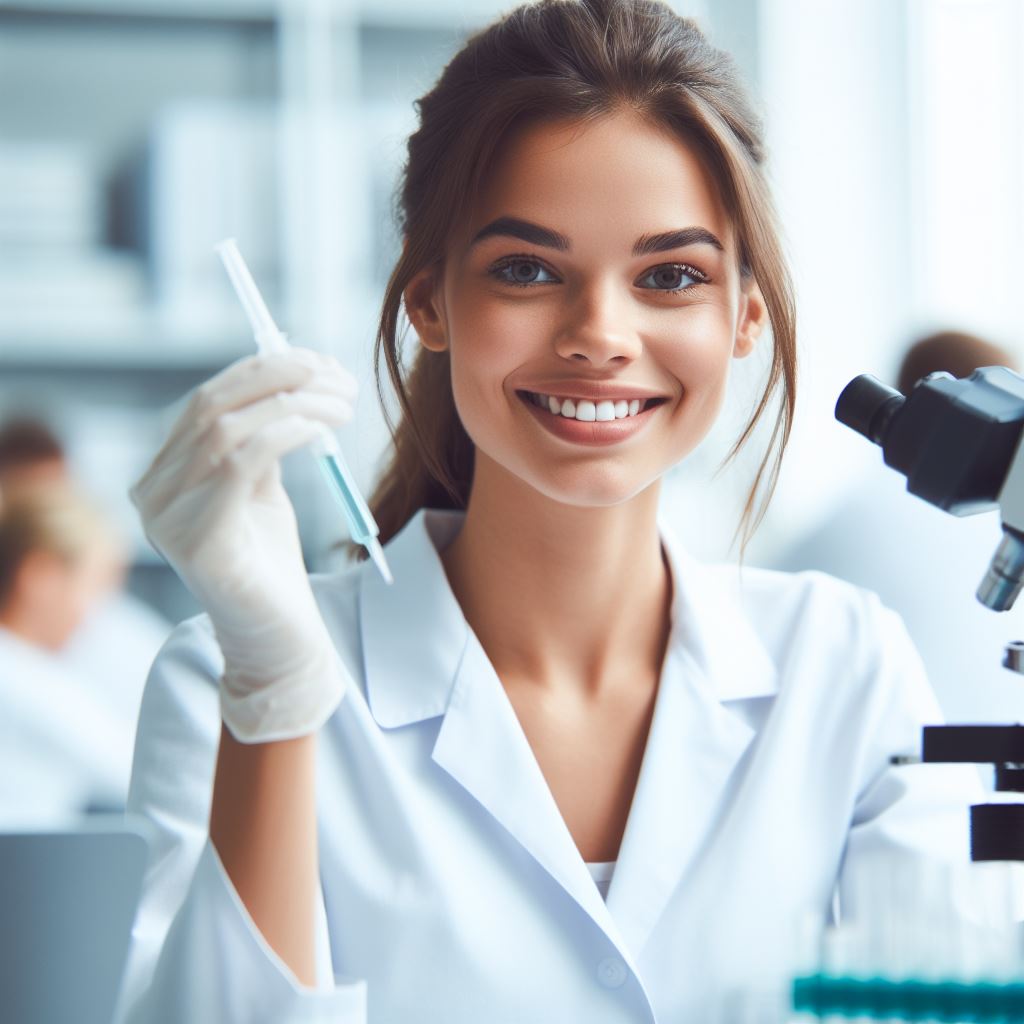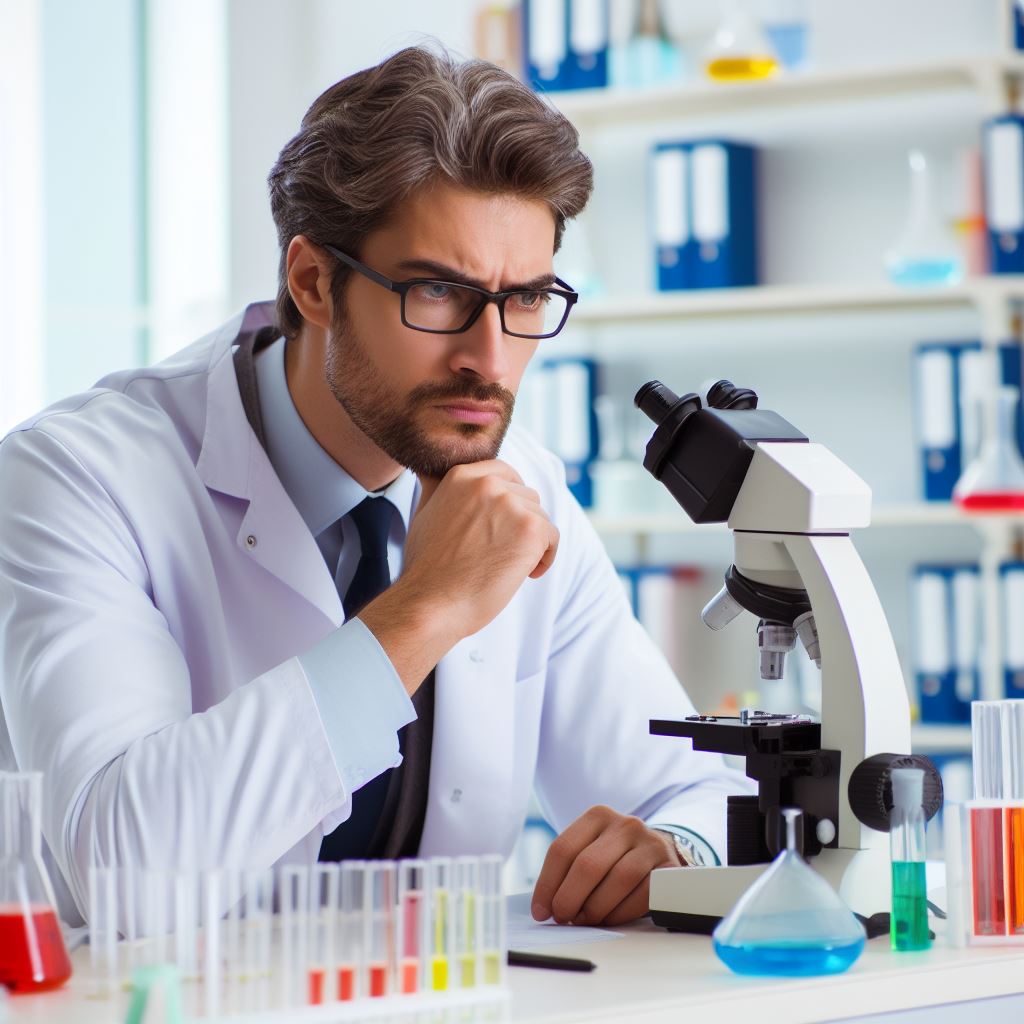Introduction
The field of biology
The fields of biology and technology have become increasingly intertwined in the American context.
With advancements in scientific research and technological innovations, the boundaries between these two disciplines have blurred, leading to exciting new opportunities and challenges.
In the field of biology, technology has revolutionized the way scientists study and understand living organisms.
DNA sequencing techniques, for example, have enabled researchers to uncover the genetic codes of various species, providing insight into their evolutionary history and potential applications in medicine.
On the other hand, biology has also influenced the field of technology. Bio-inspired design, also known as biomimicry, takes inspiration from nature’s solutions to create innovative technologies.
Examples include the development of Velcro, inspired by burrs that stick to animal fur, and the design of efficient solar panels modeled after photosynthesis in plants.
Introduction to the field of technology
In the American context, the intersection between biology and technology has led to advancements in the healthcare industry.
Biotechnology has contributed to the development of lifesaving drugs and therapies, such as gene editing techniques like CRISPR/Cas9.
Additionally, technological advancements have improved the accuracy and speed of medical diagnostics, leading to earlier disease detection and more effective treatments.
However, the intersection of biology and technology also raises ethical and societal concerns.
Issues such as genetic engineering, privacy, and the digital divide need to be carefully addressed to ensure responsible and equitable use of these technologies.
In general, the intersection between biology and technology in the American context is a fascinating and rapidly evolving field.
It offers immense potential for scientific and technological advancements, but also requires thoughtful consideration of ethical and societal implications.
By understanding and harnessing this intersection, we can unlock new possibilities for improving human health and addressing pressing global challenges.
Importance of Biology and Technology Intersection
Advancement in medical research
The intersection of biology and technology has greatly advanced medical research, leading to breakthroughs in understanding diseases and developing effective treatments.
Development of innovative treatments and therapies
Through the intersection of biology and technology, new and innovative treatments and therapies have been developed, improving patient outcomes and quality of life.
Improvement in diagnostics and healthcare solutions
Biology and technology coming together has resulted in improved diagnostics, enabling early detection of diseases and more effective healthcare solutions.
Enhancement of agricultural practices for food security
The intersection of biology and technology has played a crucial role in enhancing agricultural practices, leading to increased food production and improved food security.
Contribution to ecological preservation and conservation efforts
The intersection of biology and technology has contributed to ecological preservation and conservation efforts by providing tools and techniques for monitoring and protecting ecosystems.
Read: Introduction to Environmental Science Careers in the USA
Case Studies and Examples
The intersection of biology and technology has led to numerous advancements and innovations in various fields, particularly in the American context.
This section aims to explore the practical applications and case studies where biology and technology intersect.
Medical field
- Genetic engineering and gene-editing technologies
- Development of personalized medicine
- Bioinformatics and the analysis of large-scale biological data
In the medical field, the intersection of biology and technology has revolutionized healthcare and disease treatment.
- Genetic engineering and gene-editing technologies: These technologies allow scientists to manipulate genes, potentially curing genetic diseases or preventing their occurrence.
- Development of personalized medicine: Advances in molecular biology and data analysis enable tailored treatments based on an individual’s genetic makeup.
- Bioinformatics and the analysis of large-scale biological data: Through bioinformatics, researchers can analyze vast amounts of biological data to gain insights into diseases and develop targeted therapies.
Agricultural sector
- Biotechnology and genetically modified organisms (GMOs)
- Precision farming techniques and sensors
- Crop improvement and resilience against pests and diseases
The application of biology and technology in the agricultural sector has significantly transformed farming practices and crop production.
- Biotechnology and genetically modified organisms (GMOs): Genetically modified crops have enhanced characteristics, such as resistance to pests and diseases, leading to increased yields and reduced reliance on chemical pesticides.
- Precision farming techniques and sensors: Farmers utilize sensors and data analysis to optimize irrigation, fertilizer application, and predict crop health, improving efficiency and sustainability.
- Crop improvement and resilience against pests and diseases: Biological techniques allow for the development of crops with improved resistance to specific pests and diseases, reducing the need for chemical interventions.
Environmental applications
- Bioremediation and environmental cleanup
- Biofuels and renewable energy sources
- Conservation and preservation of endangered specie
The intersection of biology and technology has also contributed to environmental conservation and sustainable practices.
- Bioremediation and environmental cleanup: Microorganisms are engineered to break down pollutants and remove contaminants, aiding in the remediation of polluted environments.
- Biofuels and renewable energy sources: Biological processes are harnessed for the production of biofuels, providing renewable and sustainable alternatives to fossil fuels.
- Conservation and preservation of endangered species: Technology assists in monitoring and protecting endangered species, ensuring their survival through methods like DNA analysis and tracking devices.
Generally, biology and technology intersect in various domains, yielding substantial advancements in the American context.
The case studies and examples provided in this section demonstrate the transformative potential of this intersection across the medical field, agricultural sector, and environmental applications.
Read: The Future Forecast: Research Scientist Roles in the U.S. by 2030
See Related Content: Technologies Transforming Neuroscience Research
Transform Your Career Today
Unlock a personalized career strategy that drives real results. Get tailored advice and a roadmap designed just for you.
Start NowEthical and Social Implications
Controversies surrounding genetic engineering and GMOs
Genetic engineering and the development of genetically modified organisms (GMOs) have sparked numerous controversies.
Some argue that GMOs pose health risks, while others believe they have the potential to address global food scarcity.
Critics worry about the long-term effects of GMO consumption and the possibility of unintended consequences.
There are heated debates about the labeling of GMO products and consumers’ right to know what they are consuming.
Privacy issues in the field of bioinformatics and genetic data
Bioinformatics and the collection of genetic data raise privacy concerns in the American context.
The use and storage of genetic information may lead to potential abuses, such as discrimination by insurance companies or employers.
There is a need to establish strict regulations to ensure the protection of individuals’ genetic privacy.
Policy discussions often revolve around striking a balance between the advancement of biotechnology and safeguarding privacy rights.
Debate over the ownership and patenting of genetically modified organisms
The ownership and patenting of genetically modified organisms (GMOs) have been highly contested.
Critics argue that granting patent rights on GMOs allows companies to monopolize the food market.
Others believe that patents incentivize innovation and allow companies to recoup their research and development costs.
The question of whether genetically modified organisms should be considered inventions or products of nature remains unresolved.
Concerns about the environmental impacts of biotechnology
The environmental impacts of biotechnology have raised significant concerns.
There are worries about the unintended spread of genetically modified organisms in the natural environment and their potential threat to biodiversity.
The use of certain biotechnological techniques, such as gene editing, may have irreversible consequences on ecosystems.
Balancing technological advancements with environmental sustainability is a crucial challenge in the field of biotechnology.
Discussions on the equitable distribution of healthcare technologies
The intersection of biology and technology also raises questions about the equitable distribution of healthcare technologies.
Unequal access to advanced healthcare technologies may exacerbate existing health disparities.
Policy interventions are necessary to ensure that healthcare technologies are accessible to all members of society.
Ethical debates revolve around prioritizing public health and promoting equitable healthcare system development.
Transform Your Career Today
Unlock a personalized career strategy that drives real results. Get tailored advice and a roadmap designed just for you.
Start NowBasically, the field of biology and technology in the American context presents numerous ethical and social implications.
Controversies surrounding genetic engineering and GMOs, privacy concerns in bioinformatics and genetic data.
Debates over ownership and patenting of GMOs, environmental impacts of biotechnology, and discussions on equitable healthcare technology distribution are key areas of concern.
Addressing these issues requires thoughtful policy interventions that balance technological progress with societal well-being.
Read: Top U.S. Universities for Aspiring Environmental Scientists

You Might Also Like: Latest Innovations in Genetic Testing Technology
Discover More: Marine Biology Study Abroad Programs
You Might Also Like: Women in Meteorology: Breaking Barriers and Succeeding
Explore Further: Salary Expectations for Climatologists in the USA
Future Possibilities and Prospects
In the rapidly evolving field of biology and technology, several emerging trends offer exciting possibilities for the future.
Emerging trends in biology and technology
- Advances in genomics and genetic engineering allow for precise manipulation of genes.
- Integration of artificial intelligence and machine learning enhances data analysis and interpretation.
- Development of nanotechnology enables targeted drug delivery and diagnostics at the cellular level.
- The use of 3D printing technology facilitates the creation of functional human organs.
- Increased understanding of the human microbiome opens doors for personalized treatments.
Potential applications in personalized medicine and individualized healthcare
- Individualized genetic testing helps predict susceptibility to certain diseases and tailor treatments accordingly.
- Precision medicine allows for targeted therapies based on a patient’s unique genetic makeup.
- Remote monitoring devices enable real-time tracking of health parameters and early detection of diseases.
- Artificial organs and implants improve the quality of life for individuals with organ failure.
- Bioinformatics tools aid in the analysis and interpretation of vast amounts of biological data.
Advancements in synthetic biology and bioengineering
- Creation of synthetic organisms with specific functions and applications becomes a reality.
- Development of new materials through bioengineering revolutionizes various industries.
- Bio-inspired robotics and biomimicry lead to the invention of highly efficient mechanical systems.
- Biofuels and bioplastics offer sustainable and eco-friendly alternatives to traditional energy sources
- Gene editing technologies like CRISPR-Cas9 pave the way for precise and targeted genetic modifications.
Expansion of interdisciplinary collaborations in research and development
- Collaboration between biologists, engineers, computer scientists, and mathematicians leads to innovative solutions.
- Shared knowledge and expertise accelerate progress and breakthroughs in the field.
- Integration of diverse perspectives enhances problem-solving and fosters creativity.
- Interdisciplinary teams address complex challenges that require a holistic approach.
- Mutual understanding and effective communication facilitate successful collaborations.
The role of government policies and regulations in shaping the future of biology and technology
- Regulatory frameworks ensure the ethical and responsible use of emerging technologies.
- Government funding supports research and development in the field of biology and technology.
- Laws protect individuals’ privacy and genetic information in the era of big data.
- Regulations promote transparency and accountability in the development and deployment of new technologies.
- Government initiatives foster innovation and encourage the translation of scientific discoveries into practical applications.
As biology and technology continue to intersect, the future holds immense potential for advancements that can revolutionize various sectors, including healthcare, manufacturing, and environmental sustainability.
We can shape a future where biology and technology collaborate, improve lives, and tackle global challenges by embracing trends, fostering collaboration, and implementing policies.
Read: Impact of Technology on the Research Scientist Profession in U.S.
Conclusion
Main points discussed in the intersection between biology and technology
- The collaboration between biology and technology has given rise to advancements in medicine, agriculture, and environmental conservation.
- Biotechnology has revolutionized healthcare by enabling personalized medicine and the development of new treatments.
- Genetic engineering has improved crop yields and created genetically modified organisms to address food scarcity.
- Ecological monitoring and conservation efforts have benefited from technological tools like DNA sequencing and remote sensing.
It is essential to emphasize the importance of the intersection between biology and technology.
This interdisciplinary collaboration has the potential to address pressing global challenges, improve human well-being, and protect the planet.
In the American context, this intersection holds tremendous promise for scientific innovation, economic growth, and improved quality of life.
Closing thoughts on the potential impact of this intersection in the American context
- Advancements in biotechnology can lead to breakthrough treatments for diseases like cancer and genetic disorders.
- Agricultural biotechnology can contribute to sustainable and efficient food production to meet the growing population’s needs.
- Technological advancements in ecology and conservation can aid in the preservation of biodiversity and restoration of ecosystems.
- Collaboration between biological and technological fields can foster economic development and create job opportunities in the United States.
Overall, the intersection between biology and technology is a powerful force that has the potential to shape the future of healthcare, agriculture, and environmental stewardship in the United States and beyond.
[E-Books for Sale]
The Big Book of 500 High-Paying Jobs in America: Unlock Your Earning Potential
$19.99 • 500 High-Paying Jobs • 330 pages
Explore 500 high-paying jobs in America and learn how to boost your career, earn more, and achieve success!
See All 500 High-Paying Jobs of this E-Book
1001 Professions Without a Degree: High-Paying American Jobs You Can Start Now
$19.99 • 1001 Professions Without a Degree • 174 pages
Discover 1001 high-paying jobs without a degree! Unlock career tips, skills, and success strategies for just $19.99!




